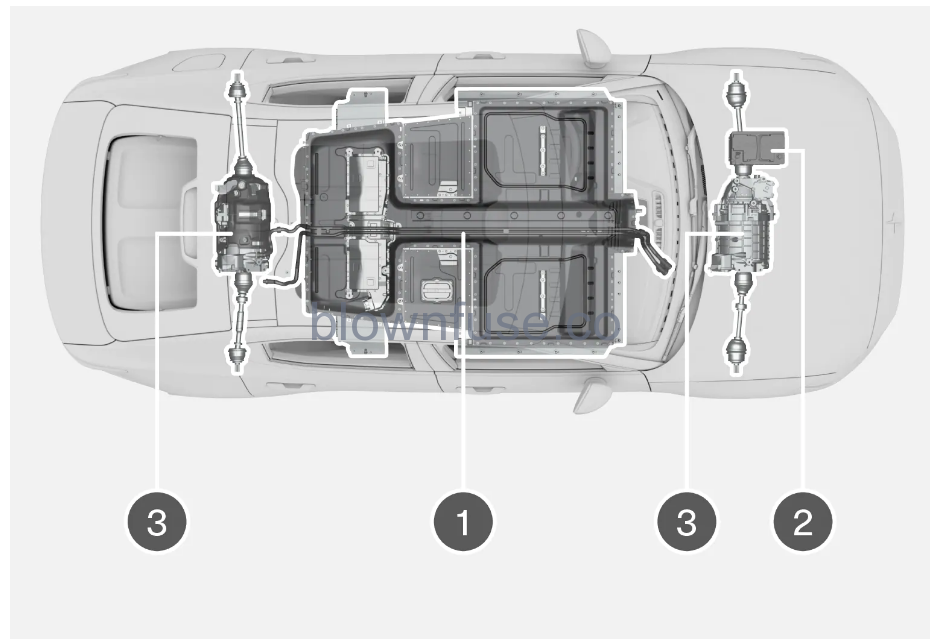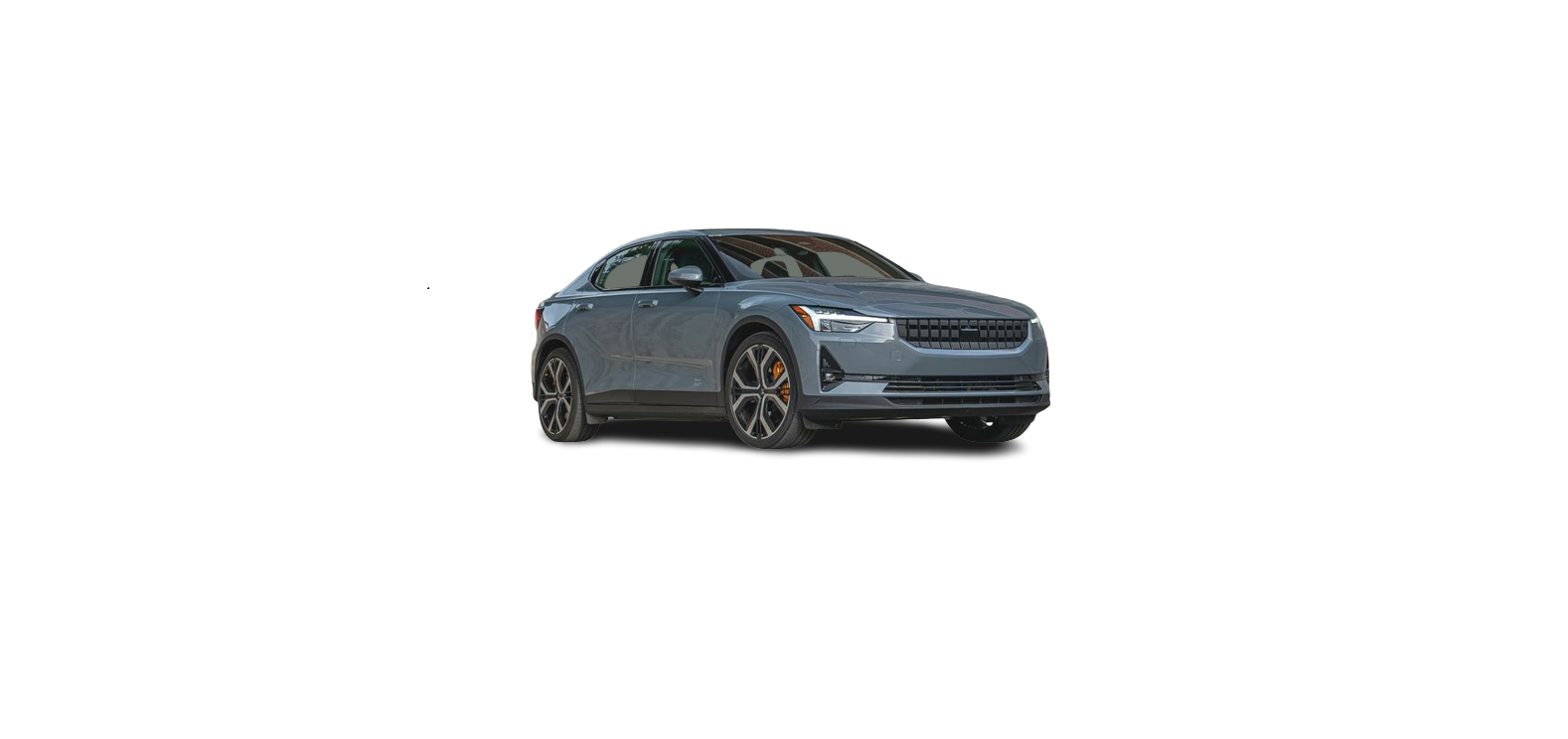2021 Polestar 2 Park Electric motor and charging General topics
Battery recycling
Consult with Polestar Customer Support if you have any questions or concerns about the disposal of this type of waste.
Drive systems

- High-voltage battery – The vehicle contains a high-voltage battery. The function of the high-voltage battery is to store energy. This energy is provided by plugging the charging cable into an electrical outlet and through regenerative braking.
- 12 V battery – The vehicle contains a 12 V battery that starts the vehicle’s electrical system and powers the electrical equipment in the vehicle.
- Electric motors – The vehicle contains two electric motors that power the vehicle and recover braking energy and convert it into electrical energy.
General information about electric propulsion
The instrument panel and center display show information specific to electric operation – charging information, distance to discharged battery and charge level of the high-voltage battery.
In order to function, the high-voltage battery and its electrical drive systems must be at the correct operating temperature. Battery capacity can be considerably reduced if the batteries are too cold or too hot. When preconditioning using the charging cable connected to an electrical outlet, the vehicle’s drive system and passenger compartment are prepared before driving to reduce both wear and tear and energy needs while driving.
The high-voltage battery that powers the electric motors is recharged using the charging cable, but can also be recharged during light braking.
No electrical current
Keep in mind that if there is no electrical current to the vehicle, i.e. the ignition is switched off or the start battery is discharged, certain important functions such as power brakes, power steering, etc. will be limited.
The power brakes only work when the vehicle is switched on.
Exterior Sound
Please be aware that there is no sound from the engine when the vehicle is being powered by the electric motors and it may be difficult to detect by children, pedestrians, cyclists and animals. This is especially true at low speeds.
High-voltage electrical current

Do not touch anything that is not clearly described in the Manual.
Range assistant
Optimizing range
The factors that the driver can influence to extend the range are speed, driving style and climate settings.
To help guide drivers in their driving, real-time information is provided on the impact of each energy consumption factor on the range. If speed, driving style or climate settings are adjusted, the estimated range is updated.
ECO climate can also be activated or deactivated in the range assistant.
- Tap
 .
.
- Select Range assistant.
- Activate or deactivate Eco climate.
Recommendations for long-term storage
Preparing for long-term storage
- The recommended charge level for long-term storage is between 40% and 50%. Set the recommended charge level in the center display.
- If the charge level is higher than this recommended level, drive the vehicle until it has reached the recommended level.
- If the charge level is lower than recommended, charge the vehicle to the recommended level.
- The recommended tire inflation pressure during long-term storage is 330 kPA (48 PSI). Check the inflation pressure of the tires and adjust to the correct pressure, which can be found on the vehicle’s tire information decal or certification label.
During long-term storage
- Make sure that the charging cable is plugged into a 120/240 V outlet (alternating current).
- Check the charge level regularly and charge to an appropriate level if it falls below 20%.
- If you plan to store the vehicle for longer than 3 months, it is recommended that the vehicle has a constant AC (alternating current) charge connected, with a maximum charge level set to 40% or 50%. Check regularly to make sure the AC charging is working.
After long-term storage
- Check the brakes by driving the vehicle slowly for a short distance. Depress the brake pedal five times (hold down for five seconds each time).


